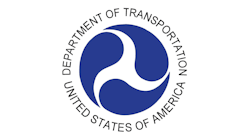USDOT awards $1.32 billion in RAISE grants to 109 projects across the country
A total of $1.3 billion in round one awards from the fiscal year (FY) 2025 Rebuilding American Infrastructure with Sustainability and Equity (RAISE) discretionary grant program was awarded to 109 projects throughout the country.
“Thanks to President [Joe] Biden and the Bipartisan Infrastructure Law, crucial projects that communities across the country have long hoped for are finally becoming a reality,” said U.S. Department of Transportation Secretary Pete Buttigieg. “With the $1.32 billion in funding we’re announcing today, we’re setting in motion over 100 projects that will make roads safer, help mitigate the impact of climate change and ensure that people in communities of all sizes can get where they need to go safely and efficiently."
USDOT describes the RAISE program as supporting a broad selection of communities and projects of local and regional significance. The department notes funding is split equally between urban and rural areas, and a large percentage of grants selected in this first round of FY25 support urban and rural regions defined as historically disadvantaged or areas of persistent poverty.
The eligibility requirements of RAISE allow project sponsors, including state and local governments, counties, Tribal governments, transit agencies and port authorities, to pursue multi-modal and multi-jurisdictional projects that are more difficult to fund through other grant and formula programs.
In total, 195 highly rated projects requested almost $2.4 billion for the $1.32 billion available through the first round of FY25 funding. The FY25 notice of funding opportunity is still open for remaining funds, with applications due by Jan. 30, 2025.
City of Flagstaff awarded $19 million for multimodal improvements
The city of Flagstaff, Ariz., received $19 million for the Butler Avenue and Fourth Street Safety and Multimodal Improvements project. This project will construct multimodal improvements along Butler Avenue from I-40 to Sinagua Heights Drive and Fourth Street from Sparrow Avenue to Crest Stone. The improvements include off-street bike lanes, ADA-compliant sidewalks, mid-block crossings, roadway widening, corridor access management solutions with a raised median and two roundabouts, rapid flashing beacons and drainage structures.
Colorado’s Mesa County awarded over $21 million for safety and connectivity improvements
Mesa County, Colo., was awarded $21.4 million for the Orchard Avenue (E 1/2 Road) Safety and Connectivity Project, which will construct ADA-compliant sidewalks, dedicated bike lanes, mid-block crosswalks, new stormwater management features and accessible transit stops along approximately 1.75 miles of rural Orchard Avenue. Orchard Avenue is a main corridor for traffic to Central High School, Long Family Memorial Park and Bookcliff Middle School. The project will also reconstruct the Grand Valley Canal bridge to allow for safe pedestrian and bicycle crossing.
City of Olean receives $25 million to help connect communities
The city of Olean, N.Y., received $25 million for its Connecting Communities: A Multimodal Vision for West State Street project. This project will provide a complete street makeover of a 2.5-mile road. Improvements include a two-way protected bike lane or shared-use path; bump-outs and pedestrian refuge islands; marked crosswalks, pedestrian crossing signals and ADA improvements; green infrastructure; five traversable mini-roundabouts; and pedestrian and public transit amenities. Currently, West State Street has no facilities for bikes, scooters or mobility chairs. Pedestrian crosswalks are 50-feet long and many are without crossing signals. This project aims to enhance safe routes to school, as many school children live in neighborhoods south of West State Street that are too close to ride the bus and must cross the busy street to access their buildings.
HART awarded $24.3 million for heavy maintenance facility
The Hillsborough Transit Authority (HART) was awarded more than $23.4 million marking the largest grant funding award in the agency’s history. These funds will support phase one of the Maintenance Site Remediation and Facility Modernization Project.
Phase one focuses on redeveloping a heavy maintenance facility site to meet the current and future needs of the HART fleet and operations. The site remediation and modernization project lays the foundation for a modernized facility capable of supporting a fleet of up to 250 compressed natural gas (CNG) buses. Plans for the site include accommodating low-emission vehicles powered by CNG and/or hydrogen fuel.
“The RAISE grant funding is crucial and will enable HART to modernize our facilities and enhance operational efficiency, paving the way for a greener, more sustainable transit system,” said HART CEO Scott Drainville. “We thank the [U.S.] Department of Transportation for recognizing the importance of this project and supporting HART’s vision for the future of public transportation in our region.”
SacRT receives $9.5 million to fund construction of New Dos Rios light-rail station
The Sacramento Regional Transit District (SacRT) has been awarded $9.5 million to provide the final funding needed to construct the Dos Rios Station, a new light-rail station on SacRT’s Blue Line. The station will serve the Mirasol Village housing development and Sacramento’s River District, just north of downtown Sacramento, Calif.
“With the strong support of our congressional delegation and our local partners, we’ve been making tremendous progress to deliver the new Dos Rios Station. This funding award is the last piece of the puzzle to complete project delivery to increase connectivity for the community,” said SacRT General Manager/CEO Henry Li.
The Dos Rios Station is a $43 million project at the intersection of Ahern, Sproule and North 12th streets. Preliminary work has already begun at the site, constructing a retaining wall and leveling ground. Major construction is scheduled to begin this spring, with the station anticipated to open by the end of 2026.
The Dos Rios Station represents a collaborative effort to improve accessibility and equity in the Sacramento region. The RAISE grant completes the financing required for the project, enabling SacRT to preserve other funding for system operations and maintenance.
Champaign-Urbana MTD, city of Urbana awarded $10 Million
A $9,950,930 RAISE grant was awarded to the city of Urbana, Ill., to complete the Florida Avenue Corridor Project.
According to Urbana City Engineer John Zeman, the project will reconstruct approximately 1.3 miles of Florida Avenue from South Wright Street to Hillcrest Avenue to include complete street enhancements. Improvements will include ADA-accessible sidewalks, an off-street shared use path, bus pullouts and shelters, pavement reconstruction, intersection improvements and traffic signals in place of all-way stop signs, accessible pedestrian signalsand bicycle detection.
“We plan to build the shared-use path between Lincoln Avenue and Race Street in 2025 through an Illinois Transportation Enhancement Program (ITEP) grant in advance of the larger complete streets project,” Zeman said.
This funding marks an important step for a project that has been a priority for Champaign County for several years.
"This grant represents the tremendous value of cross-agency partnerships. From the planning study from the Regional Planning Commission, to the resources from the city of Urbana, from the advocacy through Champaign County First, to MTD's multiple submittals of the grant to this federal program, all roadway users and residents win," said Karl Gnadt, managing director and CEO of the Champaign-Urbana Mass Transit District (MTD).
WisDOT celebrates $25 million to improve safety and mobility in Milwaukee
One of Wisconsin Department of Transportation’s (WisDOT) $25 million RAISE grants will support the National Avenue Complete Streets project in Milwaukee.
The National Avenue project, in the heart of Milwaukee’s vibrant Hispanic community, redesigns a 2.6-mile segment of West National Avenue (WIS 59) between South 1st and South 39th streets. The work will modernize National Avenue into a complete street corridor, including separated raised bike lanes, travel lane reductions (road diets), raised crosswalks, a raised intersection, transit platforms and improved sidewalk space. The project will also upgrade street lighting and traffic signals, add green infrastructure to reduce runoff entering local waterways and improve transit stops on the corridor.
“[This project builds] on the momentum of the meaningful investments we’ve made in recent years to upgrade our aging infrastructure, reduce reckless driving and improve road safety in Wisconsin,” said Wisconsin Gov. Tony Evers. “This investment allows us to support all transportation users and improve the quality of life in historically underserved communities.”
Improvements are designed to address a history of severe crashes, support alternative modes of travel and improve safety for pedestrians and bicyclists. WisDOT notes it worked with the city of Milwaukee, area residents and stakeholders to develop the design to transform the busy corridor on the near south side of Milwaukee.
Rock Region METRO awarded $5.4 Million for TOD planning
Rock Region METRO received its first and largest competitive grant award to date—$5.4 million to plan a transit-oriented development (TOD) at the River Cities Travel Center in Little Rock, Ark.
The River Cities Travel Center is the agency’s only transit station and the single transit station in Pulaski County serving local intracity transit service. The station serves as the terminus for 13 of Rock Region METRO’s local fixed-route bus lines, which is within the METRO Connect East Little Rock-Riverdale microtransit zone and two blocks of METRO Streetcar Blue Line.
Rock Region METRO kicked off an initial TOD project in 2019. Despite project progress being hindered by the COVID-19 pandemic, the agency’s board of directors voted to move forward with planning a public-private partnership for the current River Cities Travel Center location, aimed at keeping transit operations at the heart of new development. The agency tapped the firms Wendel, Willdan Financial & Economic Consulting Services and Crafton Tull for initial planning activities and grant-writing support.
“METRO not only improved the transit passenger experience, but also downtown Little Rock when the travel center was built on the city block between 4th St. and Capitol Avenue and Rock and Cumberland streets, spurring development along surrounding streets,” said Rock Region METRO CEO Justin Avery. “Although our team has worked hard to keep the center in a state of good repair, the facility is now almost 25-years old and is ready for re-investment. We are thankful for this planning grant so we can continue engaging our community and optimizing the top stop in the entire METRO system for not only transit riders, but also our neighborhood, city and capital city region.”
Next steps will involve more planning work, including a public outreach campaign to inform and shape preliminary concepts into more concrete plans, as well as the development of a request for information for various developers to build upon established market feasibility of various proposals for the project.
A full list of projects receiving RAISE grants can be found on USDOT’s website.

Megan Perrero | Editor in Chief
Megan Perrero is a national award-winning B2B journalist and lover of all things transit. Currently, she is the Editor in Chief of Mass Transit magazine, where she develops and leads a multi-channel editorial strategy while reporting on the North American public transit industry.
Prior to her position with Mass Transit, Perrero was the senior communications and external relations specialist for the Shared-Use Mobility Center, where she was responsible for helping develop internal/external communications, plan the National Shared Mobility Summit and manage brand strategy and marketing campaigns.
Perrero serves as the board secretary for Latinos In Transit and is a member of the American Public Transportation Association Marketing and Communications Committee. She holds a bachelor’s degree in multimedia journalism with a concentration in magazine writing and a minor in public relations from Columbia College Chicago.




